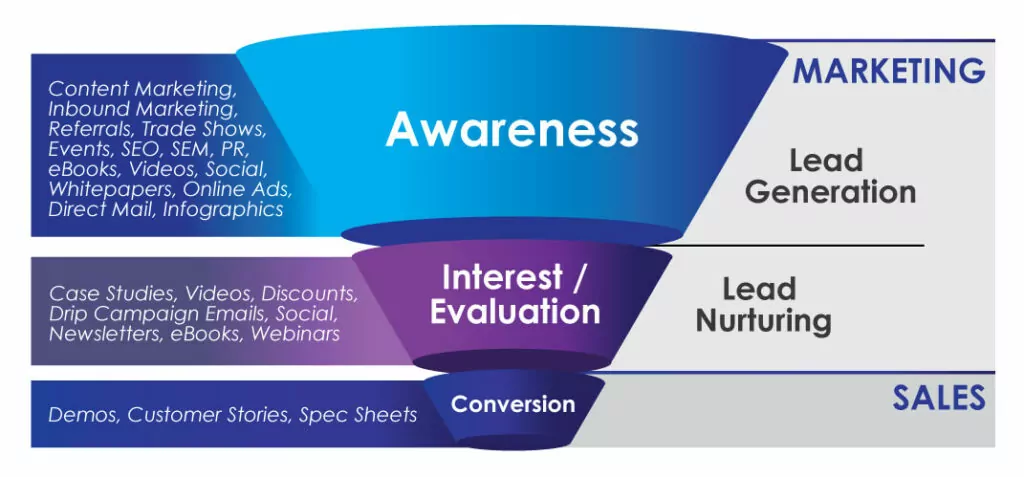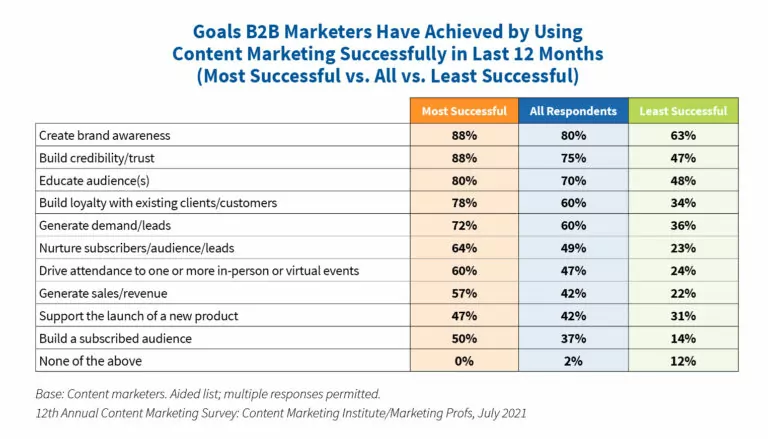Most customers aren’t afraid to shop around. While attracting inbound leads remains a top priority for marketers, creating an effective inbound lead nurturing strategy to maximize conversions is equally essential. In this guide, we’ll explore the benefits of lead nurturing, plus proven tactics to help you develop a winning strategy. Let’s get started!
Key Takeaways:
- Inbound lead nurturing is the critical series of steps after lead generation to engage with prospects and move them through the sales funnel to convert them into customers.
- Because inbound leads pass from the marketing team to the sales team during the process, both teams should be involved with your lead nurturing strategy.
- The most effective lead nurturing strategies focus on a personalized, omnichannel approach that reaches prospects on multiple channels.
Why Should You Prioritize Inbound Lead Nurturing?
Lead generation and nurturing are top priorities for marketers, with 61% of surveyed marketers citing traffic and leads as their greatest challenges.
However, generating leads is only the first piece of the puzzle. Once prospects become inbound leads, your team needs an effective nurturing strategy to maintain engagement and convince those leads to become customers. Otherwise, you’ll lose those potential customers, not to mention the time and money you invested to reach them. Companies that excel at nurturing inbound leads spend 33% less to generate 50% more sales-ready leads.
7 Highly Effective Tactics to Nurture Your Inbound Leads
Lead nurturing is a critical part of your business’s success. Here are seven of the most effective ways to nurture leads:
1. Develop a Lead-Scoring Strategy to Qualify Inbound Leads
The backbone of a winning lead-scoring strategy is an open collaboration between the marketing team and the sales team. Lead scoring is the process of using predetermined criteria to rank leads based on the likeliness of a conversion. Qualifying leads ensures that your team prioritizes high-quality leads, so employees aren’t wasting time or resources on prospects that aren’t interested or engaged.
Source: Paragon
Lead scoring starts with the marketing team at the top of the sales funnel. However, lead qualification happens on multiple levels as prospects travel from a broad awareness level toward the conversion level:
- Marketing Qualified Leads (MQLs) satisfy the marketing team’s pre-established criteria to determine the level of interest in becoming a customer.
- Sales Accepted Leads (SALs) are the leads that the marketing team passes to the sales team for further nurturing.
- Sales Qualified Leads (SQLs) meet the sales team’s predetermined criteria and are highly likely to convert.
Since these inbound leads interact with both the marketing and sales teams during their journey, both teams should have input when setting the parameters to score leads, especially sales accepted leads that pass between them.
2. Create Targeted Content for Segmented Leads
The one-size-fits-all approach may work for some business aspects, but inbound lead nurturing is not one of them. You should optimize content targeting diverse leads at various stages in the sales funnel.
Start by developing unique buyer personas to study and understand your leads. Zero in on your perfect target audience. Use marketing automation tools to segment your leads based on categories like demographics, engagement, interests, and other marketing triggers. Then, create customized content tailored to these diverse personas.
3. Adopt an Omnichannel Approach for Inbound Lead Nurturing
90% of customers expect to have consistent brand interactions across all channels in today’s digital market. Marketers must look beyond the basic email drip campaign method and focus on the big picture. How are your lead nurturing methods utilizing all of your active channels as a cohesive, integrated strategy? Consider:
- Social media
- Email marketing
- Website content
- Paid retargeting ads
- Sales outreach
- Expos, conferences, and conventions
- Downloadable resources
Effective omnichannel lead nurturing takes a unified approach to ensure your prospects see consistent, relevant messaging across the board.
4. Focus on Multiple Touchpoints
Did you know that most consumers will interact with your brand at least eight times before they’re ready to convert? These interactions with your business are called touchpoints, and they lay the foundation for brand awareness and perception.
Not all of these touchpoints will be within your control, but many are. As you develop your inbound lead nurturing strategy, conduct thorough research to understand how and where prospects encounter these touchpoints during the customer journey. Think about how you can use a mix of media to leverage these touchpoints, nurture leads through the sales funnel, and measure key performance indicators (KPIs) to gauge campaign success.
5. Establish a Timeline for Follow-Ups
As it is with comedy, timing is everything in marketing, too. Did you know that a one-minute response time can lead to 391% more conversions?
Promptly following up with your inbound leads is a simple yet highly effective nurturing tactic. Marketing automation minimizes the potential for human error to ensure that prospects aren’t slipping through the cracks. Paring analytical data with automation tools will help your team establish an optimal timeline, and never forget to follow up with a qualified lead again.
6. Invest in Creating a Robust Content Marketing Strategy
Content marketing is the building block of sales. It generates three times as many leads as traditional marketing tactics but costs 62% less. Win-win, right? Two-thirds of surveyed marketers expect their content marketing budget to increase in 2022.
Adding a powerful content marketing initiative into your inbound lead strategy will put the focus on the most essential aspect of lead nurturing – engagement. Content marketing seeks to inform, educate, entertain, or otherwise engage your prospects and customers. It creates brand awareness, builds credibility, and drives sales, among many other benefits.
Source: Content Marketing Institute
7. Personalize Your Inbound Email Marketing Strategy
Email marketing automation has revolutionized the way businesses can personalize content based on engagement triggers such as browsing a product page, downloading gated content, signing up for newsletters, clicking on call-to-action (CTA) links, and more.
99% of marketers claim that personalization advances customer relationships, and 92% said their leads and customers expect individually tailored experiences. When you combine personalized email marketing messages with engagement triggers from omnichannel touchpoints, your prospects receive the right information at the optimal time.
Improve Your Inbound Lead Nurturing Strategy with MXTR
Lead nurturing is a vital part of the sales funnel. Without an effective strategy, you’re spending money to reach new prospects but failing to convert most of them into paying customers. MXTR gives you all the marketing automation tools you need to fill this gap in the process. Connect all of your consumer touchpoints to qualify and nurture inbound leads on every level and every channel.
Ready to give your inbound leads the attention and nurturing they deserve? Schedule a demo today.
Featured Image: istockphoto









